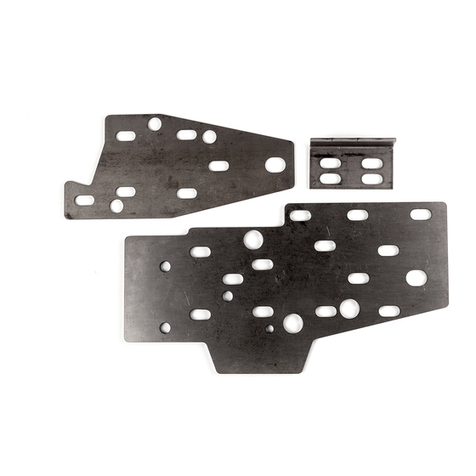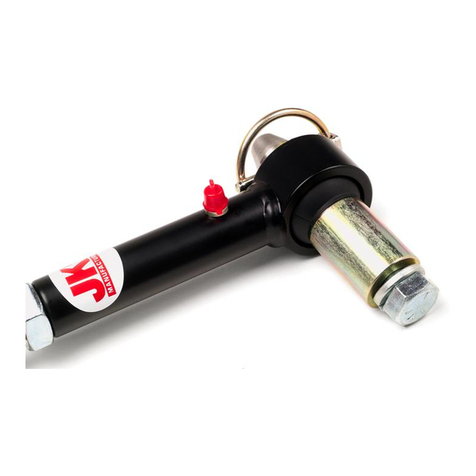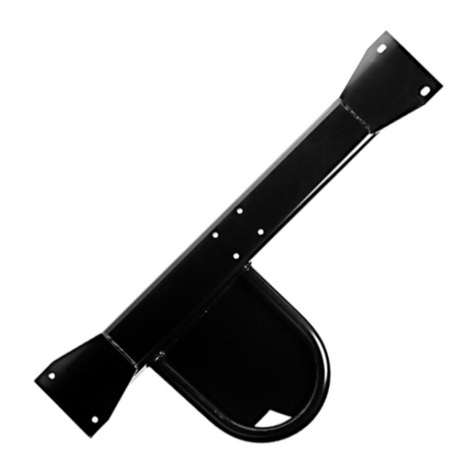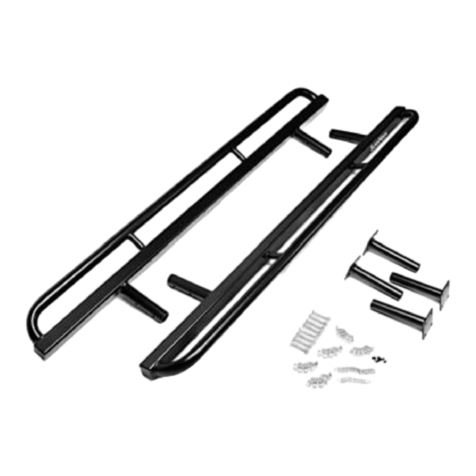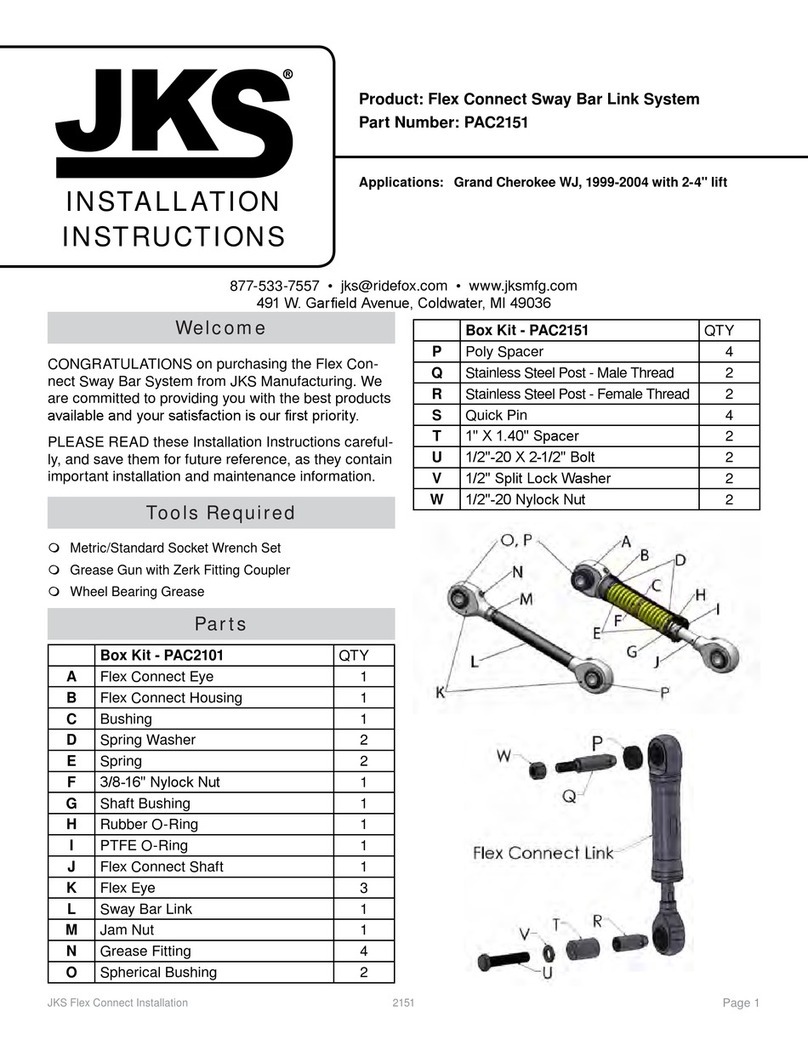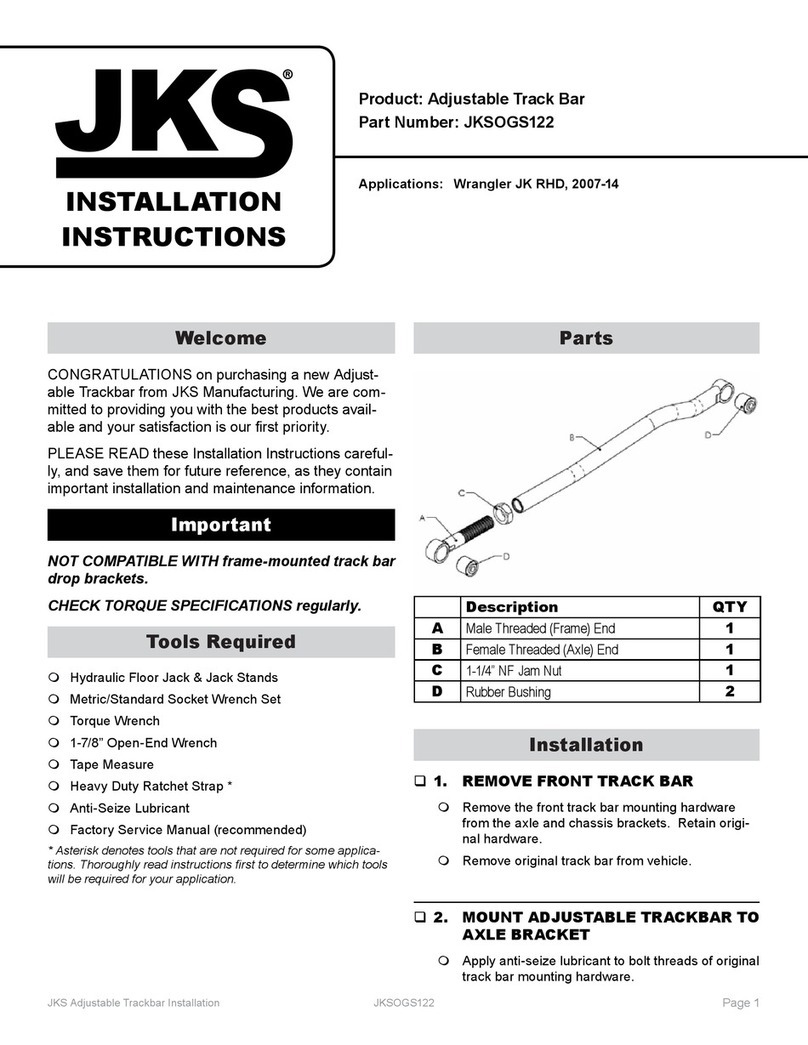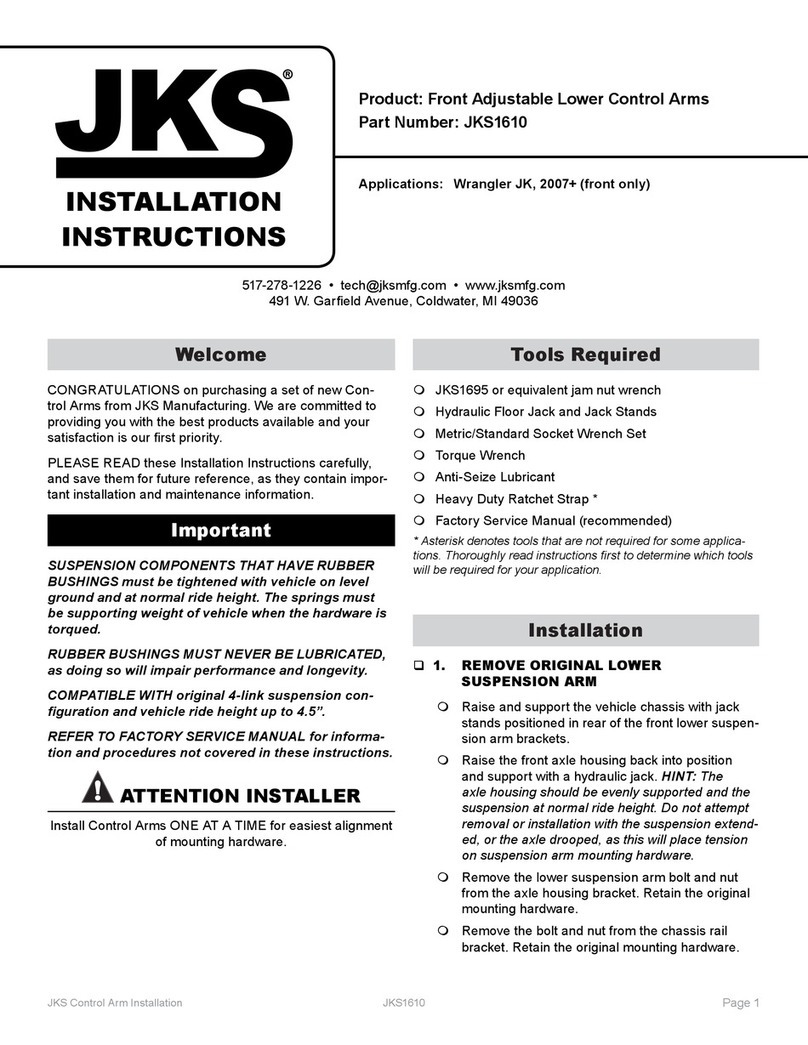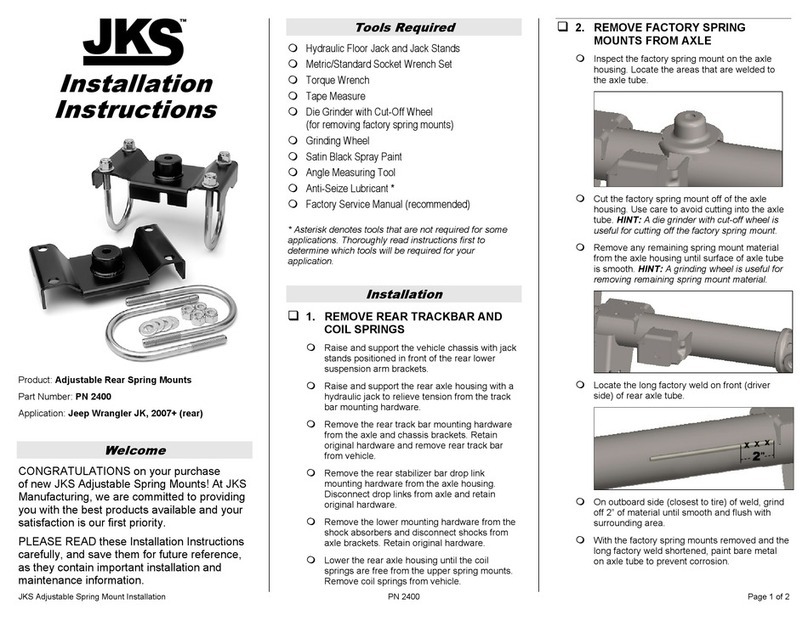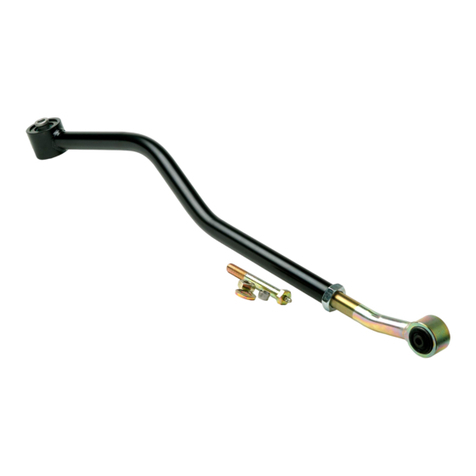
JKS2770JKS ACOS Pro™ Installation Page 5
1-1/2” Flathead Socket Screw (K) from spinning,
and tighten the 7/16” Nylock Nut (M) to 50 ft-lbs.
Make sure the Coil Spring Retainer (J) is perfectly
at against the lower spring mount, and coil spring
is secure.
10. ADJUST BUMP SHOCK POSITION
The ideal bump shock position is determined by the vehicle
suspension and varies for each application.
To properly set the bump shock position for your
vehicle, you must rst decide the point at which
suspension compression should be limited. Take
into consideration coil springs, shock absorbers,
tire clearance, or any other factors that cause the
vehicle to bottom out.
IMPORTANT: Because it replaces the original rubber
bump stop, the bump shock should determine the limit
of compression travel. The bump shock should be
fully compressed when the suspension reaches maxi-
mum desired compression.
With the vehicle on level ground and the suspen-
sion at full droop, extend the Bump Shock Assem-
bly (F) to the desired position.
Once the Bump Shock Assembly (F) is properly
adjusted for your application, lock in place by
turning the Bump Shock Nut (E) clockwise until
it contacts the Bump Shock Adapter (D) and fully
tighten to secure adjustment.
IMPORTANT: The suspension must be fully cycled to
test for bump shock alignment and interference issues
before the vehicle can be safely operated. The bump
shock must contact the center portion of the lower
spring pad at full compression, and there should be no
interference between the bump shock and coil spring
at full extension.
Operation
Ride Height & Bump Shock Adjustments
Future ride height and bump shock adjustments should
be made with NO LOAD on the front coil springs, and the
suspension at FULL DROOP.
NEVER TURN Adjuster Ring (B) while under tension
and ALWAYS APPLY SPRAY LUBRICANT to threads of
Main Body (A) or Bump Shock Assembly (F) before adjust-
ing.
Bump Shock Pressure
The Bump Shock Assembly (F) is pre-charged with the
proper amount of Nitrogen gas to suit most applications.
IT SHOULD NOT BE NECESSARY TO ADJUST BUMP
SHOCK PRESSURE ON MOST VEHICLES.
The Nitrogen charge is factory preset at 150 psi. For ap-
plications that require a higher or lower compression rate,
the gas pressure can be manually adjusted to a minimum
of 100 psi and a maximum of 200 psi.
To adjust pressure, the bump shock assembly must be
removed from the vehicle. Nitrogen pressure is adjusted
through the Schrader valve on top of the bump shock.
Care should be taken when discharging the bump shock to
ensure that no oil is lost. Most shops that service off-road
racing or motorcycle shock absorbers can adjust bump
shock pressure.
Maintenance
Regular cleaning with pressurized water is recommended
to maximize ease of operation and reliability.
In addition, the Bump Shock Adapter (D) has two 1/8”
drainage holes that evacuate any water collected inside the
upper spring retainer. Periodically check for blockages and
clear the drainage holes if necessary.
©2013 JKS Manufacturing, Inc & Aftermarketing, LLC
Revision Date 9/30/2013
